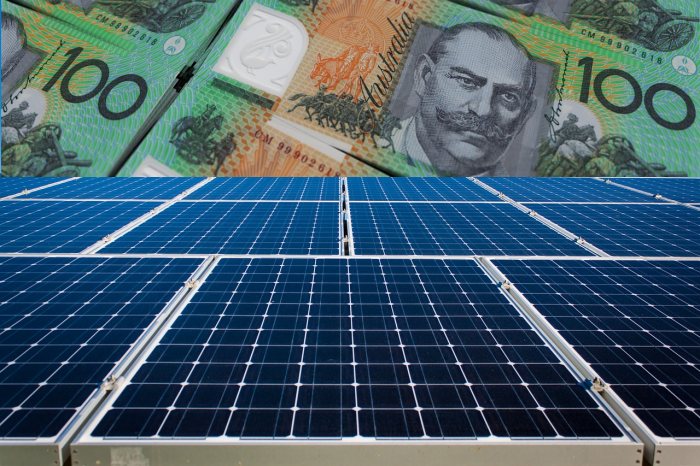
Image: QuinceMedia/Stocksnap
The Independent Pricing and Regulatory Tribunal has indicated it’s considering reducing benchmark solar feed in tariff rates in New South Wales from July – but bear in mind, the rates it sets are just a guide.
NSW feed in tariffs operate under a voluntary retailer contribution model, meaning electricity retailers aren’t compelled to pay anything for solar electricity exports. However, they usually do and are somewhat guided by a benchmark recommendation from the Independent Pricing and Regulatory Tribunal (IPART), issued annually.
It’s that time of the year again and unlike in 2017, this time around IPART will likely be unpopular with solar households in the state.
“At this stage, the benchmark range is likely to be lower than it is currently,” said IPART Chair Dr Peter Boxall. “This is because forecast wholesale prices have fallen from an average of around 11 cents to around 8-9 cents per kilowatt hour, which is good news for all electricity consumers.”
So, the benchmark FiT rate *may* fall in lockstep – but that doesn’t mean electricity retailers will necessarily follow suit as market competition also comes into play. The benchmark range for 2017/18 was/is 11.9 to 15.0 cents – but some NSW retailers offer more (just watch out for the fine print as a higher feed in tariff isn’t necessarily the best deal overall).
A lower benchmark feed in tariff is not set in stone (well, not quite) – it’s in the consultation stage.
Owners of solar power systems and potential solar buyers have avenues for expressing their views on the issue. IPART is encouraging all interested parties to provide submissions relating to their discussion paper (PDF) – and if even a small percentage of solar households do so, IPART will have a good deal of reading to do.
Valuing Exported Solar Electricity
IPART says it intends the value of solar electricity based on:
- wholesale electricity cost average
- a solar multiplier or factor recognising exports may occur at times when wholesale spot prices are either higher or lower than this average
- a loss factor (taking into account losses that occur when electricity is transmitted long distances)
- NEM fees and charges that retailers incur
There was no mention of placing a value on avoided greenhouse gas emissions or health costs associated with fossil fuel based electricity generation – and New South Wales still has plenty of that. Other items not on the list are other avoided transmission/distribution/infrastructure and ancillary service costs.
Time Varying Solar Feed In Tariffs On The Cards?
With wholesale electricity pricing peaks being shifted to later in the day thanks to the ~403,000 solar power systems installed across New South Wales and a home battery revolution waiting in the wings, energy has become a whole new ball game. Something that may be considered for the coming year are time-varying tariffs; but again as a benchmark rather than compulsory.
“We need to consider how these changes affect solar feed-in-tariffs, and what feed-in tariff could be paid to those able to supply electricity to the grid at times of higher demand,” said Dr. Boxall.
IPART is considering publishing an all-time benchmark, as well as time varying ranges. Again, as this is a voluntary scheme, electricity retailers won’t be obliged to offer one or the other, both – or any.
New South Wales wouldn’t be the first to do this as Victoria is implementing time-varying feed in tariffs from July this year – but in the case of Victoria, retailers must offer at least one or the other, and at least at the minimum rates set.
Regardless, Solar Will Still Be A Good Investment
IPART says it will release a draft report in early May and a Final Report is due to the NSW Government by 30 June 2018.
While Greens energy spokesman Jeremy Buckingham says a reduction in feed in tariffs would discourage new uptake of systems, (again, it depends how retailers react to any IPART guidance), solar power will remain a solid investment. New South Wales households ditching the idea of installing solar panels on account of any reduction may just be continuing to lock themselves into high electricity bills.
In a situation of reduced feed in tariffs becoming a reality at the electricity retailer end of things, it just becomes more important to optimise solar power system sizing and orientation in order to maximise self-consumption; installing a suitably sized system in a way that maximises output when the household daytime demand for electricity is at its greatest.
As to whether a yet-to-be-seen drop of a couple/several cents would suddenly make solar batteries worthwhile, I’ll leave SQ blogger Ronald to rant about discuss feed in tariffs and battery systems. In his article, Ronald outlines some important financial considerations for would-be battery buyers to consider, particularly given Sydney currently has the most affordable electricity prices in Australia in terms of capital cities.

 RSS - Posts
RSS - Posts



From what I read, it is recommended that the FIT will be reduced around 35%, due to lower wholesale costs with more renewables coming online. I doubt the retailers will discount their tariff’s by this much.
Trickle down econ… renewables, I think not.
https://www.ipart.nsw.gov.au/files/sharedassets/website/shared-files/pricing-reviews-energy-services-publications-solar-feed-in-tariffs-201819/solar-feed-in-tariffs-201819-issues-paper-march-2018.pdf
11 cents to around 8-9 c so if you have a usage component that specifically covers solar production hours you can expect a decease of two to three cents.
The cost of the power is only one part! of the per KWh charge don’t forget retailers have PPA’s making the cost of power less reliant on spot prices.
look at fig 3.1 in your own link then 4.1